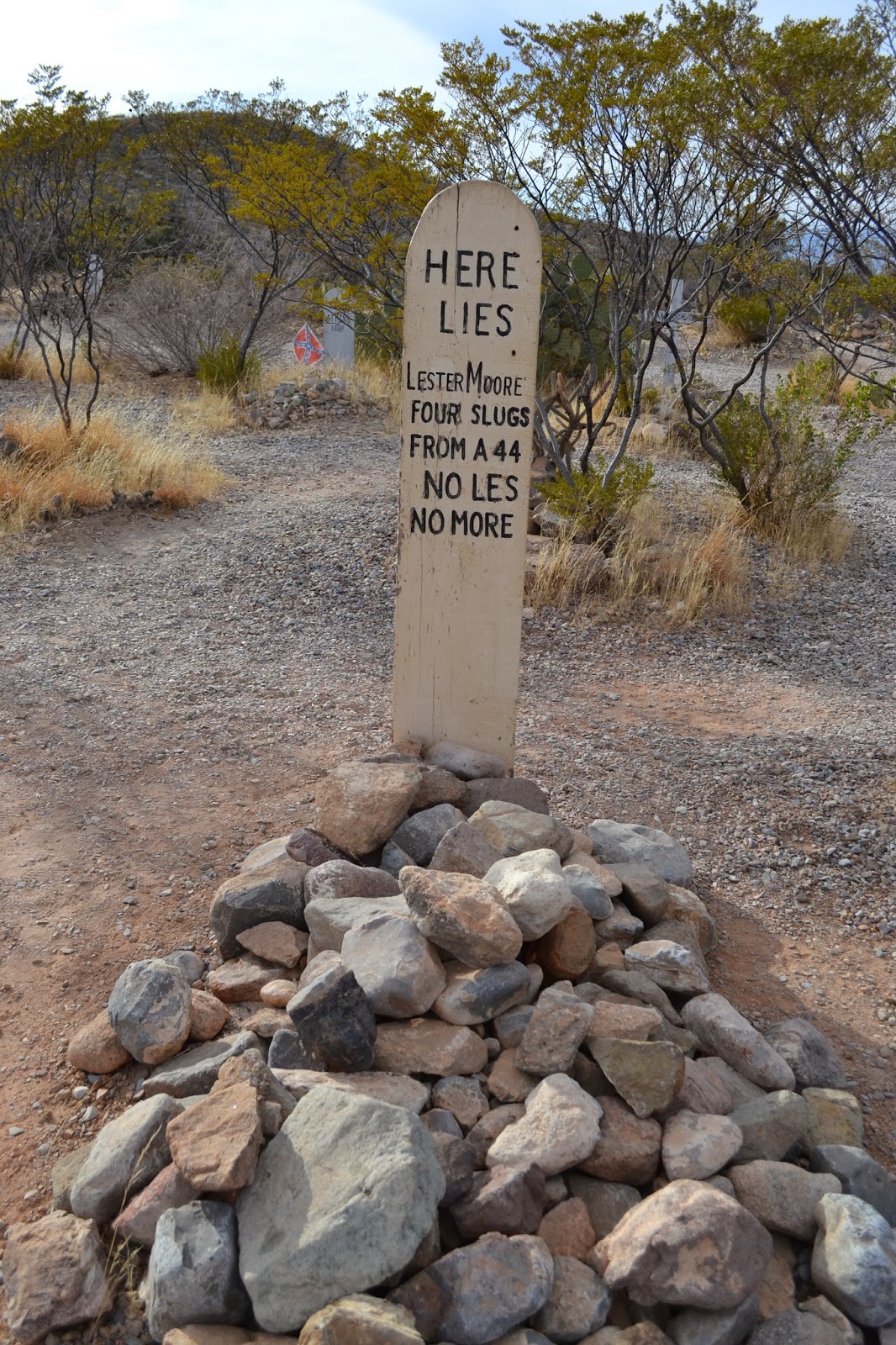It's a gorgeous day not a cloud in the sky so we decided to spend our last day in Huachuca City sightseeing. Where to go, where to go? Nestled amongst the Mule Mountains is a picturesque little town called Bisbee, AZ. Interested in finding out more, this is where are adventures will take us.
Bisbee sits at 5300 feet and was founded in 1880. It became known as "The Queen of the Copper Camps. Before the mines closed in 1975, Bisbee produced metal worth $6.1 billion (at 1975 rates). Got your interest, it did mine.
Much of Bisbee housing is built on hillsides which makes getting around difficult. The streets were built for horse and buggy not Dodge Ram 4x4's, so we opted to walk the town.
 |
| Residential area above the town |
As we drove into Bisbee and climbed in elevation we left the desert cactus behind for trees and red coloured stone and soil.
 |
| Lots of trees very few cactus |
As we walked around Bisbee you can't help but see the evidence of a once booming mining town. In almost 100 years of production it is estimated that Bisbee mines produced over 8 billion lbs of copper, 2.8 million ounces of gold, 77 million ounces of silver, 304 million lbs of lead, and 372 million lbs of zinc. OMG that's a lot of rock to move.
 |
| Abandoned mining building |
 |
| Old abandoned mine on side of road |
I wanted to take the tour of Queen Mine, Susan not so much. She opted to stay above ground and watch the video.
 |
| Queen Mine |
The big producer of copper back in the day was Phelps Dodge Corporation. They closed the mines in 1975 leaving Bisbee a shadow of it's former self. The mayor at the time suggested opening mine tours in the world-famous Queen Mine. The tours opened in 1976 with men that have worked in the mines leading the tours.
 |
| Getting outfitted for the tour |
Everyone that enters the mine gets outfitted with a hard hat, yellow slicker, light, and a tag.
 |
| My mining buddy if I get lost |
Am I nervous heck no just excited about seeing what's down there. Our tour guide gave us all the information we needed just in case...... In case of what?? A cave in, someone losses a helmet, or you get lost in the mine.
 |
| Away we go, we ride on a train, I love trains |
We stop frequently along the trip so the guide can tell us how deep we are in the mine. Also we get off the train to experience conditions that miners worked in.
 |
| Older style drills used |
 |
| Setting dynamite charges |
 |
| Newer drill used today in mines |
Now I understand the reason for everyone having a light. It's not so much in case you get lost, it's because it is so dark down there. There's virtually no external lighting.
Now you know the big question for the whole trip is going to come up. Back in the day where did the miners go to the bathroom. Well here it is......looks good to me, if you have to go you have to go. Interesting, a two seater, share anyone!
 |
| The guide told us some good bathroom stories |
WOW, what an experience, I couldn't imagine working in that type of environment. It was sooooooo dusty and we weren't mining. After handing in all my equipment we decided to go for lunch, but first I wanted to try my luck at breaking open a rock.
 |
| Me and my pet rock |
Lunch was at a nice restaurant in downtown Bisbee. The building was built way back in the day and the people were super friendly. Yes of course I ordered a burger.
 |
| Burger and slaw can't get any better than that |
After lunch we decided to head out of town the opposite way we came in. I'm glad we did because what an experience. Firstly, we came upon this massive and I mean massive open pit mine called the Lavender Pit. From 1950 to 1974 when it closed, the Lavender Pit yielded 86 million tons of ore. One of the by-products was turquoise. Bisbee turquoise, also called Bisbee Blue is amongst the finest in the world.
 |
| This pit was monstrous |
A short distance down the road from the Lavender Pit I thought we had entered a time warp. Once a booming town of activity now Lowell, AZ is a mere shell of it's former self. The Lavender Pit excavated most the downtown area leaving one main street. That is where we found ourselves, mouths open thinking we travelled back in time.
 |
| Old signs old cars on the street |
 |
| Old military vehicles |
 |
| Check out the old greyhound bus |
We saw other people wandering around looking the same way we did, almost lost for words. What a great day.



























































